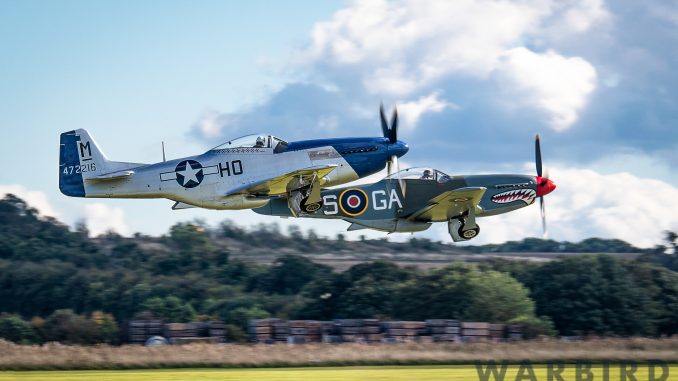
Duxford Battle of Britain – RAF 100 Air Show Report
by George Land
The final air show of the 2018 season at Imperial War Museum Duxford took place over the weekend of September 22/23. As most readers will know, Duxford Aerodrome dates back to the First World War, becoming one of the nascent RAF’s domestic airfields back in 1918. As a fighter station, Duxford became heavily involved in home defense during the Battle of Britain, and was later occupied by U.S. Army Air Forces units during WWII. The RAF closed the air station in 1961. Subsequently, the Imperial War Museum took over ownership of the facility, which now arguably boasts the finest of all aviation museums in Europe, and one of the very best in the world.
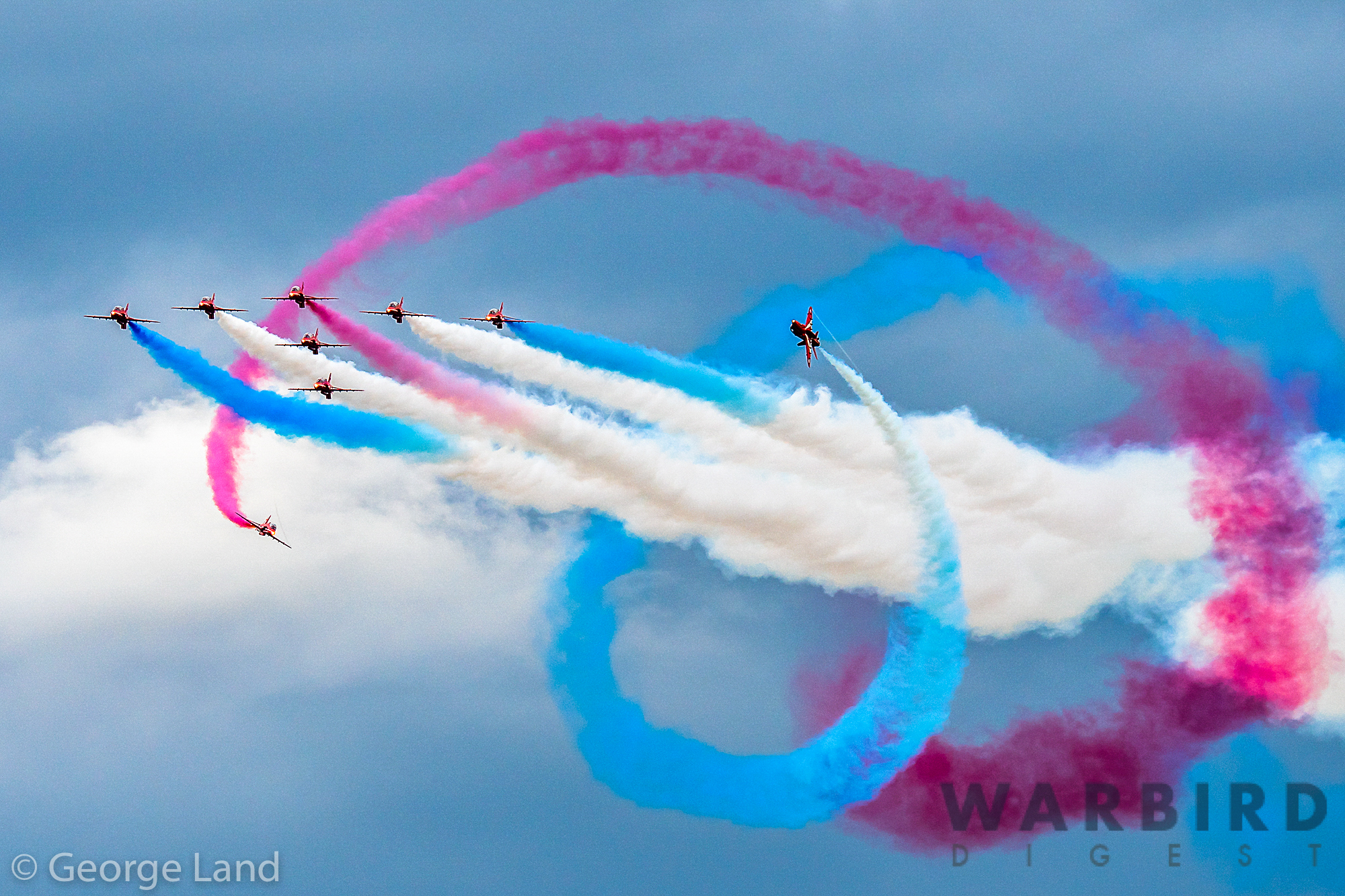
On paper, the show had the potential for being the best air show of the year in the UK, sporting a flying line-up that spanned a century of aircraft development in the Royal Air Force since it’s inception on April 1, 1918 when the Royal flying Corps merged with the Royal Naval Air Service to become the British military’s, and the world’s, first independent air arm.
The flying display started with a surprise act of sixteen de Havilland Tiger Moths, formed up to look like the number 100 in the sky as a salute to the Royal Air Force’s centenary. It culminated with a celebration of the Battle of Britain featuring a massed formation of seventeen Spitfires on Saturday. Disappointingly, due to the weather and tech issues, only thirteen Spitfires actually got to fly in Sunday’s formation.
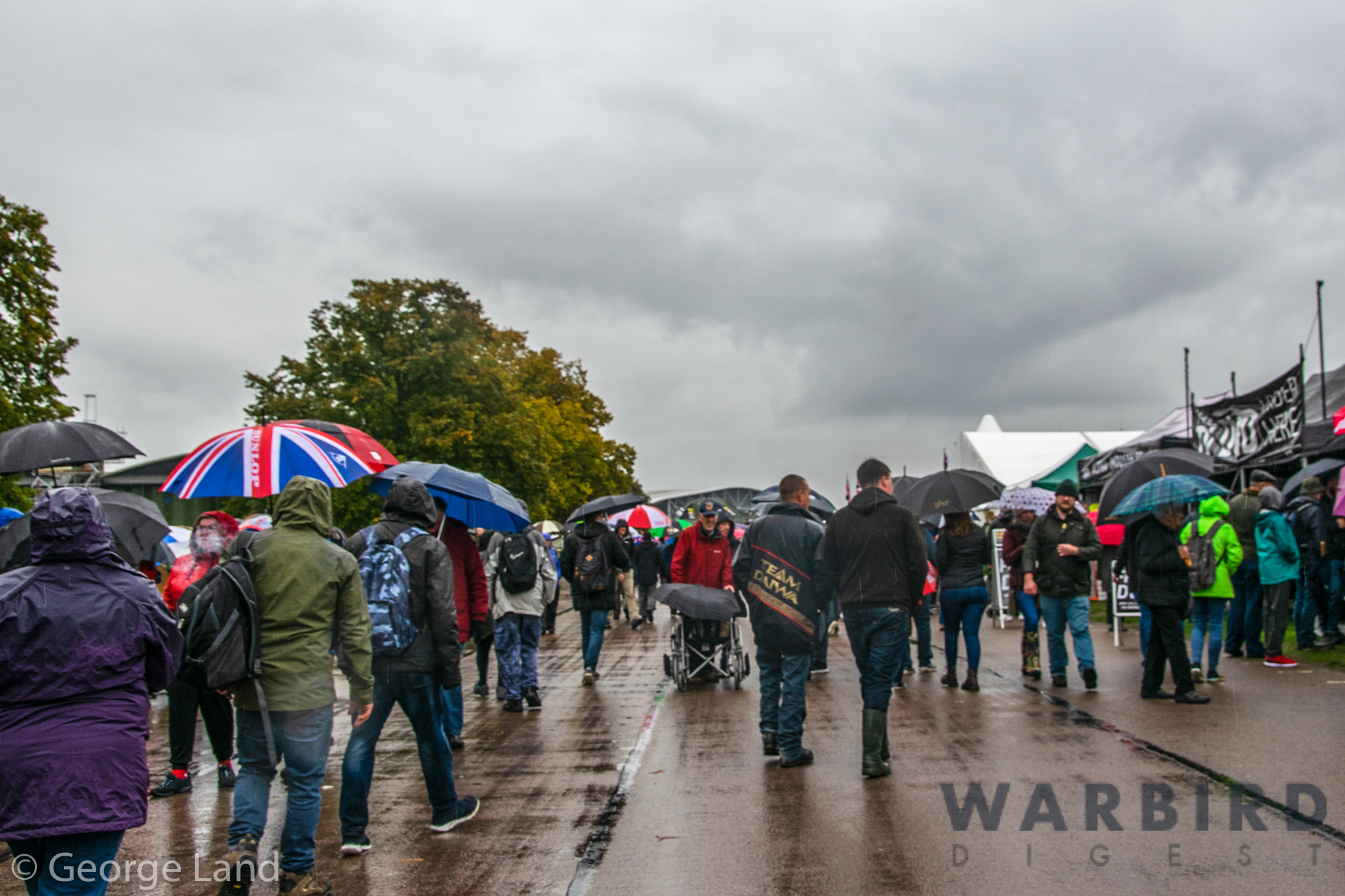
The combat aircraft assembled for display ranged from World War One biplanes such as the Bristol Fighter and SE5a, through the interwar years with examples of classic era silver dream machines like the Hawker Fury and Nimrod. It then carried on through the late thirties with a Lysander, Gladiator and Blenheim, and of course the stalwarts of the Battles of France and Britain, the Hurricane and Spitfire, representing the RAF in World war Two.
Later WWII-era aircraft were represented by the mighty Boeing B-17 Flying Fortress and, from Costal Command, the majestic PBY Catalina. P-51D Mustangs, spanning both World war Two and Korea, also got in on the act. The Korean War display then led nicely into the jet age with aircraft such as the MiG-15 flying with Mustangs, then a brace of Vampires.
The Panavia Tornado, in its last public display, along with some of the very latest in military hardware and the current mainstay of the RAF, the Eurofighter Typhoon, represented the present-day RAF, with the near future coming in the shape of the Lockheed Martin F-35B Lightning ll. Lighting IIs will replace the Tornado when they re-equip No.617 Squadron (The Dam Busters). They will also serve aboard the Royal Navy’s new aircraft carriers, HMS Queen Elizabeth and Prince of Wales.
The other significant commands of the Royal Air Force were not forgotten either, with displays of training aircraft from different periods ranging from Tiger Moths through the Piston Provost, Jet Provost, Folland Gnat up to the currently operational initial trainer, the Grob Tutor, and finally the BAe Hawk fast jet trainer (in the form of the RAF Red Arrows aerial display team). Aircraft from RAF Transport Command’s heritage included a range the Avro Anson and Dragon Rapide up to the very latest heavy-lifter, the Airbus A400M Atlas. An Airbus A330 Voyager KC3 was also scheduled to participate, but sadly the RAF could not spare one due to operational requirements.
Unfortunately for the first time this year the weather did not play ball for a Duxford flying event, with the arrivals/practice day on Friday being heavily overcast, with rain threatening all day. A strong crosswind was also building up, making it both quite nippy and limiting some of the flying at midday.
Saturday basically followed the same pattern, but with light to moderate rain through out, which again restricted a number of planes from taking an active part in the show. At times the runway was so wet that even the MiG-15 could not take off due to its landing restriction on a very wet runway.
Sunday morning looked like it was going to be a wash out, but thankfully it improved dramatically just before the airshow began at midday to being a mixture of heavy cloud with sunny patches, although there was still a strong crosswind from the North.
The very wet conditions in the morning prevented a large number of the visiting aircraft from leaving their home bases. The rain also placed restrictions on some of the locally-based aircraft prevented some of them participating in the flying.
With almost 25,000 tickets sold for each day, which I suspect is the largest audience seen at Duxford for many many years, all credit must go to the IWM’s airshow organizers, alongside the ground and air crews who worked hard to turn what could have been a disappointing, weather-affected show into one that, even with the no shows, proved to be both varied and entertaining to watch. The large audience of both aviation enthusiasts and the general public, who turned up despite the weather, seemed to enjoy themselves thoroughly as well. No doubt the attraction of the modern Royal Air Force’s RAF 100 ground displays along with performances from the Red Arrows, the BBMF and modern jets, coupled with the appeal of seeing seventeen Spitfires in the air en masse, played a strong role in drawing such a large crowd.
Overall the IWM Duxford has to be congratulated on staging a very good show in very difficult conditions, they turned what could have been a disaster in to an enjoyable event in spite of the weather.
Lets hope that the level of participation from the warbird community and the RAF can be continued and expanded and that this becomes a regular feature of the Duxford and UK air show season in the future years.
Many thanks indeed to George Land for another marvelous air show report! We look forwards to hearing more from him in the future.


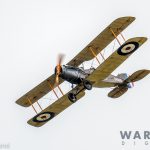
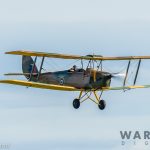
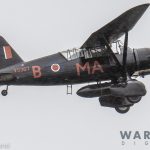
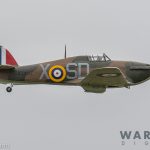
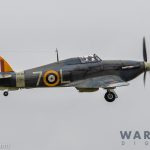
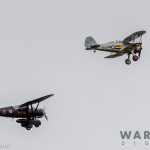
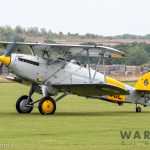
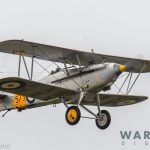
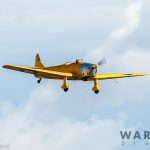
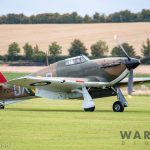
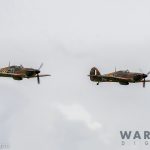
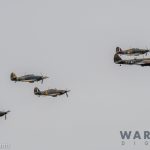
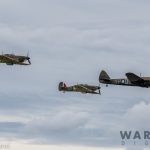
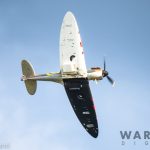
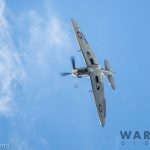
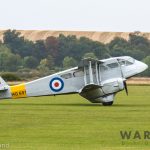
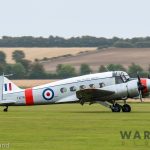
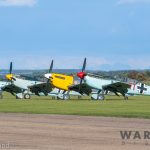
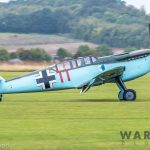
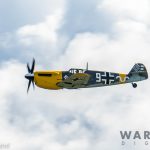
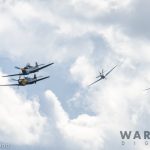
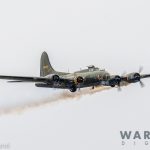
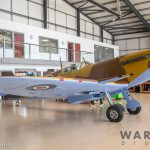
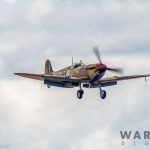
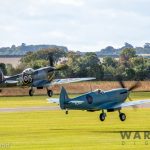
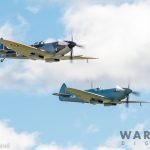
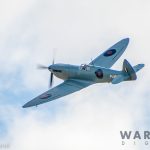
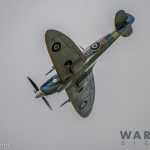
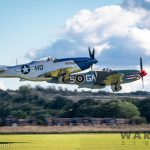
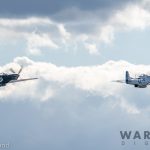
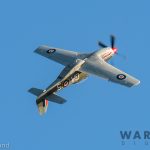
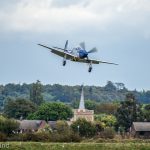
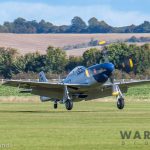
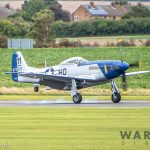
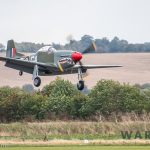
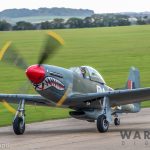
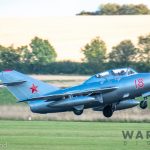

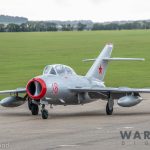
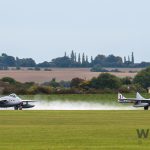
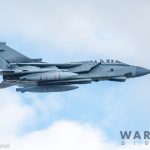
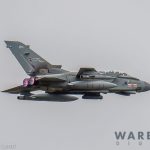
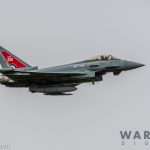
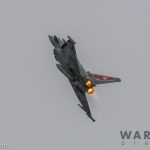
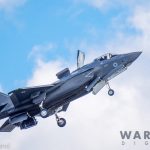
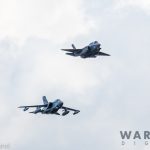
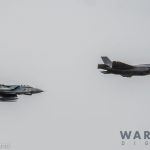
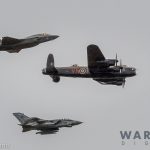
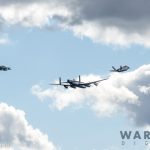
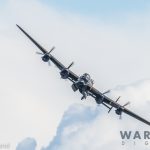
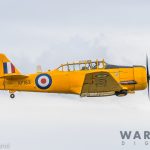
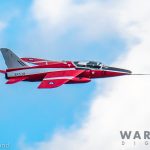
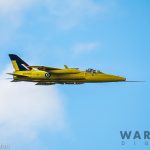
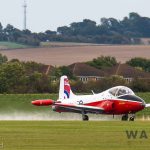
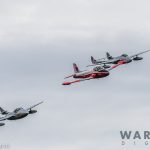
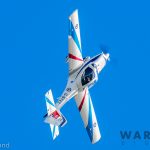
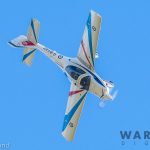
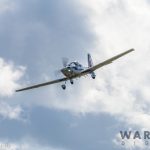
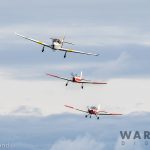
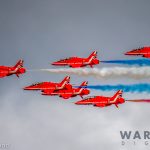
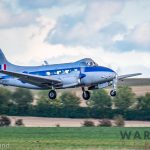
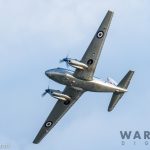
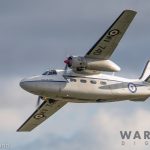
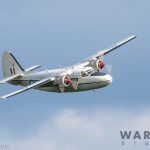
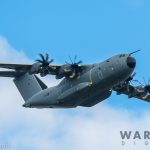
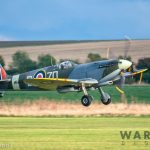
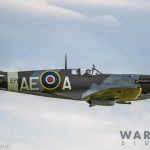
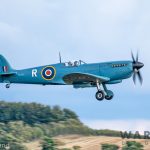
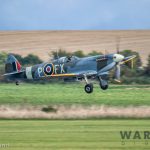
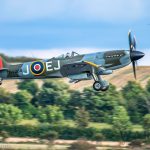
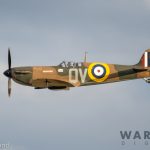
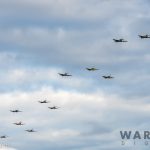
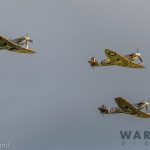
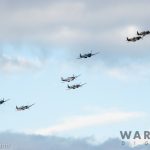
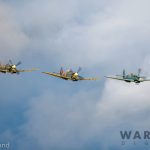
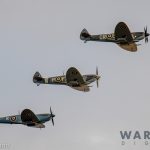
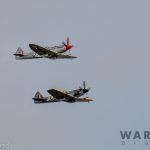
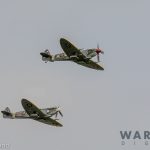
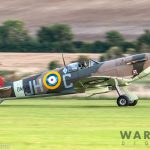
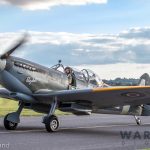
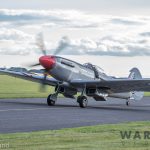
Be the first to comment
Graphic Design, Branding and Aviation Art